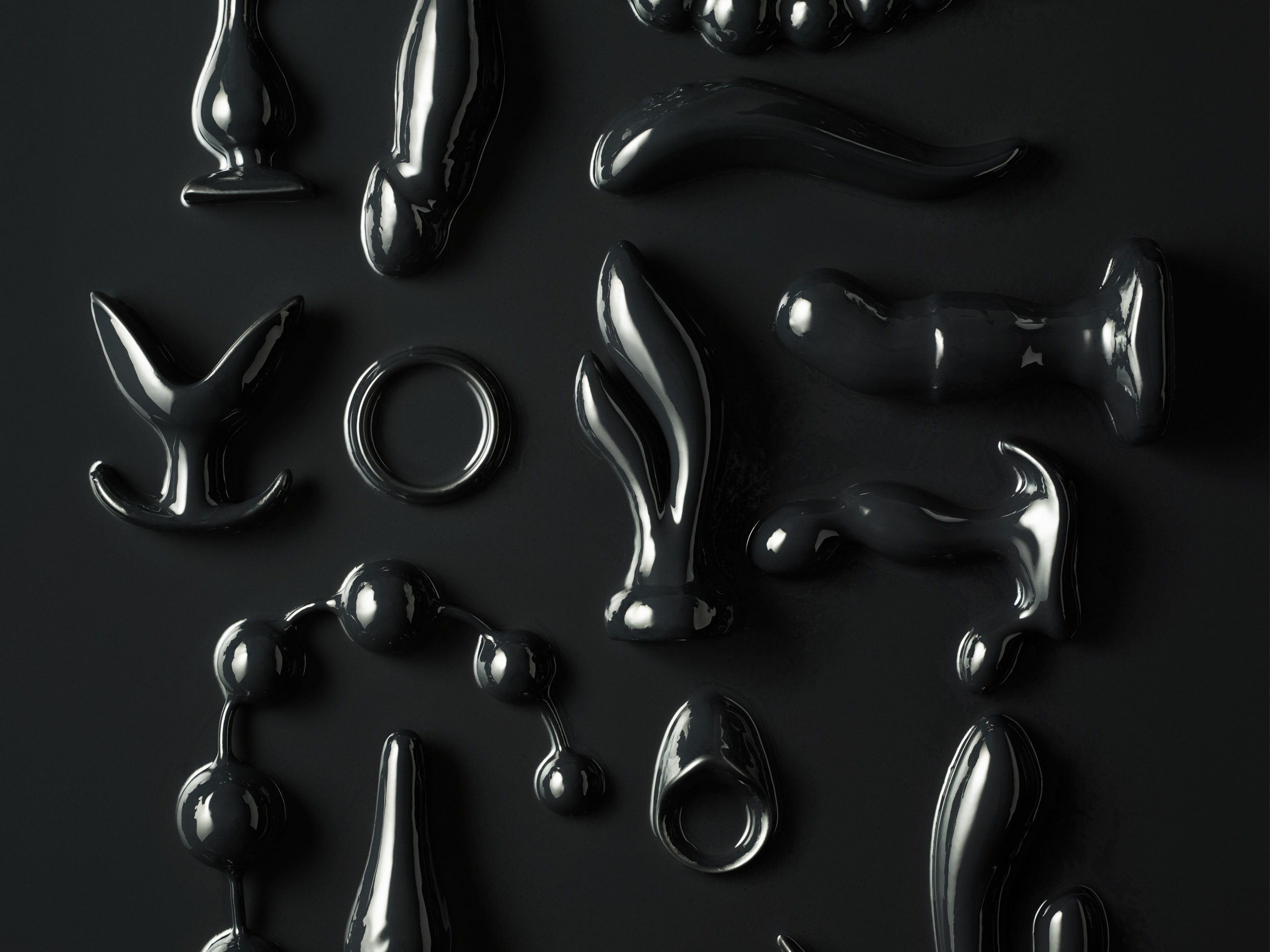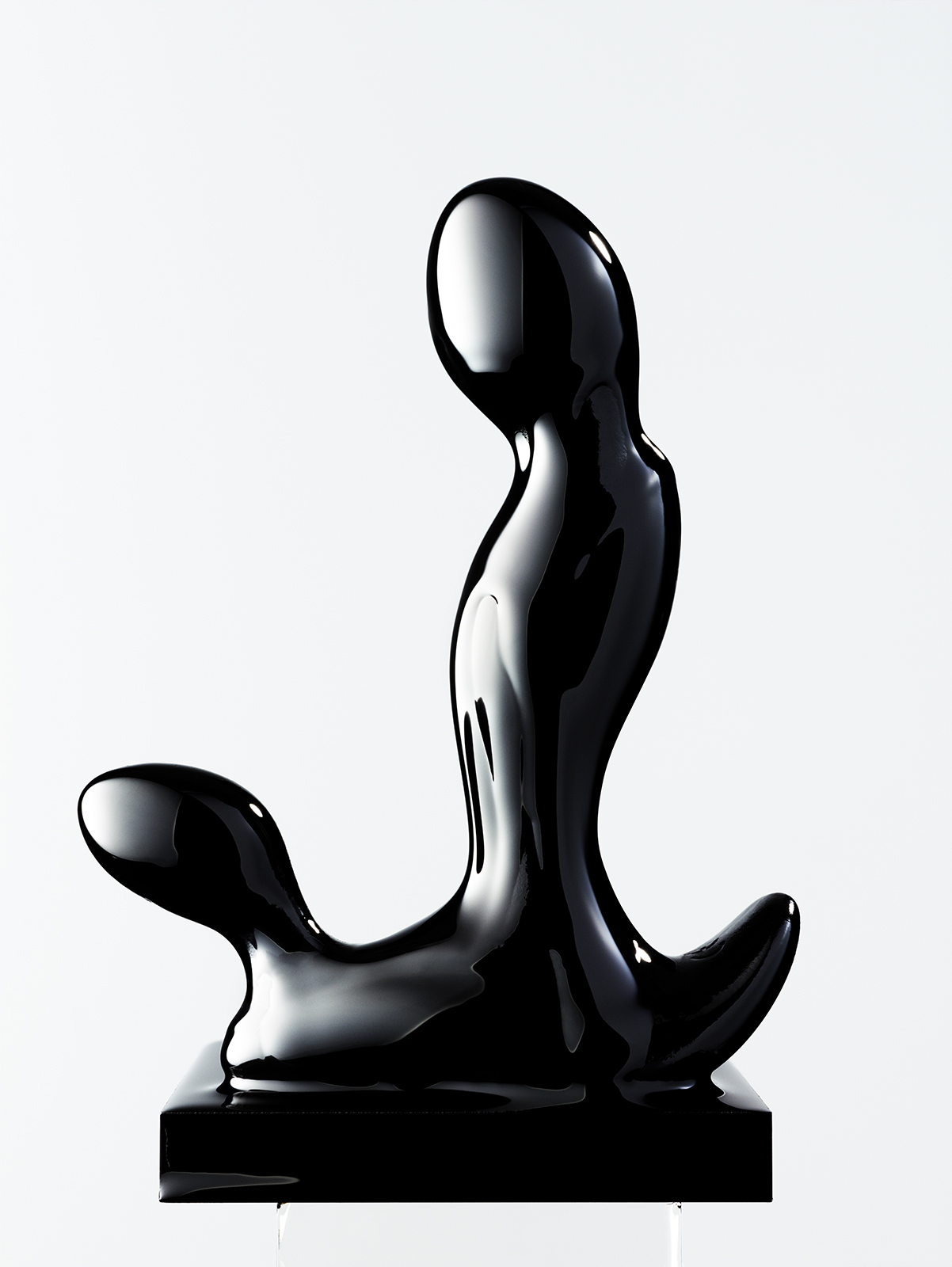In his monthly column for Document, sex writer and activist Alexander Cheves explores the past, present, and future of latex
Earlier this month, Mr. International Rubber happened in Chicago. The event is the largest gathering of rubber and latex fetishists in the world, comprising mostly gay and queer men. Equal parts convention, pageant, and sex party, MIR culminates in the crowning of a new Mr. International Rubber—the de facto standard-bearer for global rubber culture, who will then travel to rubber clubs and events across the world.
The high-fashion devotee would never say clothes don’t matter, and the hardcore latex fetishist would agree. In the minds of both, quality of material and construction of the garment are facets of an identity that is erotic, empowering, and community-building. It is no wonder that these worlds so often touch: Latex has been seen on the runways of Gucci, Mugler, Jean Paul Gaultier, Yves Saint Laurent, Pierre Cardin, and Courrèges. This year, Fall/Winter runways were replete with the shiny, movement-restricting material, from Versace’s latex tights to Richard Quinn’s medicinal-looking, multicolor gloves—with an appearance from Violet Chachki, a drag burlesque vedette, dragging a rubber-clad submissive down the runway on a leash.
How to describe rubber to an outsider, particularly in contrast to the leather scene? Unlike most leather, rubber looks wet. It’s alien, not animal. Industrial, not rugged. Leather is cowhide, but rubber and latex truly feel like a second skin, wrapping the body in a tight, waterproof sheen. Folks in leather tend to be kinky, but rubber seems to imply a heavier degree of kink, one perhaps a little less palatable to vanilla folks. Leather is flogging and boot worship, bondage and cigars, while rubber is for fisting and gimps, drones and toilet pigs. Maybe it’s something about covering up the face—the fully anonymous look popular among rubberfolk, which many people (including many kinky people) find unsettling. (Ryan Murphy’s American Horror Story series delivered its most psychosexual villain, the “Rubberman,” from this uncanny valley of the human in a nonhuman-looking suit.)
I asked the 2021 MIR titleholder, Joe Marnen, a nonbinary Chicago native, how they define the difference between leather and rubber. “Rubber is a little more playful,” they said. “I think people feel more free to express themselves with different colors, outfits, and styles. In my experience, the rubber community is also a little more welcoming of people from different gender identities.” Last weekend, Marnen ceded their crown to the new MIR, Pusckatt Pumera from Florida.
As a latex lover myself (and a new US transplant to Berlin), I’ve found the rubber scene has a stronger foothold in Europe. Many rubber fetishists say the best rubber gear can be found in Berlin and Amsterdam. As a waterproof, protective material, it has historically been used by plumbers and sanitation workers—people with messy jobs who work underground. In other words, it’s a harder pairing with the open-road, sunkissed hunk of Tom of Finland comics, which in the 1970s all-but-created the gay leather scene. (Tom of Finland art continues to inspire nostalgia and boners among queer men.) Rubber, in contrast, feels darker, wetter—a messy job, done underground.
Gay leather culture is an American invention, formed from classic images of postwar Americana: motorcyclists, cowboys, soldiers. It traces its roots to the 1940s and ’50s, where it formed in US coastal cities that were becoming havens for gay men.
“Rubber seems to imply a heavier degree of kink, one perhaps a little less palatable to vanilla folks. Leather is flogging and boot worship, bondage and cigars, while rubber is for fisting and gimps, drones and toilet pigs.”
How did rubber develop? Was it at the same time as leather, or after? These answers change depending on who you ask. Rubber, which starts its life as tree sap, was first used to create waterproof clothing in 1823, with the advent of the Mackintosh raincoat—the first latex garment commercially produced. Rubber condoms followed shortly after that in 1855, though originally, condoms were made-to-measure by a doctor. (Perhaps the first fetish couture?) This custom manufacturing process ended in the 1920s, when the Youngs Rubber Company released the first modern-style condom. They called it “the Trojan.”
Like leather, the two Great Wars were instrumental in rubber history. Wartime production saw rubber used for gas masks, diving gear, wire coating for electronics, and more. In the 1930s, synthetic rubber made from petroleum was invented, which led to neoprene (what today’s surfing wetsuits are made of—another commonly fetishized material, albeit one a bit lighter on the wallet).
The first manufacturer of rubber fetishwear was Atomage, a brand that started making restrictive, skintight gear in the late-’50s, in tandem with the developing leather scene. (Atomage is credited with making and selling the first rubber catsuit.) The company had a magazine of the same name that ran until 1985; its pages answered questions on rubber and latex care, and featured pictures of people enjoying their gear, delivering the earliest rubber porn to Americans via post. In the 1960s and ’70s, the gay movement—stepping into visibility with the first Pride marches—formed the gay rubber and latex fetish scenes that still exist today.
Across the pond, latex was making the leap into fashion with the advent of punk. In the ’70s, the SEX shop on London’s King’s Road (the one that outfitted the Sex Pistols) became the epicenter of latex fashion with designs from Vivienne Westwood. In 1979, the New World Rubber Men club, an organization for gay rubber fetishists, started a ramshackle publication with a small circulation that helped rubber and latex fetishists connect in the ’80s. (The club would later found International Mr. Rubber in 1996, 17 years after the first International Mr. Leather competition.) The rest is history, at least as most of us know it: the devastation of AIDS and the mass sexual shuttering it mandated, the enforced closure of NYC bathhouses, and the tragic loss of iconic clubs like the Saint, where rubber and latex were regular fixtures of the fabled, enormous dancefloor. The ’80s saw the invention of the VHS tape, which delivered unprecedented access to porn to the masses. Today, rubber and latex remain the most popular materials involved in rubber fetish, though it has since expanded to include neoprene, PVC, and vinyl. And, oh yeah: the internet.
Rubber seeped into public consciousness through the same technological advancements that helped spread all kinks and fetishes across the world. There were, however, touchstone moments where latex leaped into the mainstream: Madonna’s “Human Nature” music video, Michelle Pfeiffer’s 1992 role as Catwoman. The magazine Rubber Rebel defined rubber and latex for gay men between ’93 and ’96. (It would inspire the cover of the book Skin Tight by Tim Brough, to which I owe a debt of gratitude for some of this information, along with YouTube sex educator Whiteout Rubber.) Like the leather scene, there are countless local groups, gatherings, events, bar nights, and “Rubbouts” all over the world for rubber and latex lovers today, and the internet is expanding the scene to new adherents daily. (Someone reading this might be getting curious—and that’s how we got here, after all.)
So, where is the scene going? As every modern kinkster and fetishist will tell you, the scenes we love and live in are changing. Leather bars are closing en masse; few, even globally, are left. Events like Folsom Europe in Berlin and the Folsom Street Fair in San Francisco (and MIR and IML, obviously) are still reliable gathering spaces, but outside them, it’s hard to find a local group without living in a big city. And thanks to the internet, not a single fetish magazine from the ’70s and ’80s heyday of printed smut has survived. There are articles, op-eds, and internet rants aplenty about how kink is “dying.” It’s not, but it is changing—for the better, Marnen thinks. But we have to help it change.
“It wasn’t that long ago that contestants who wore heels or feminine gear received boos on stage. This year, they received the biggest applause.”
“Racism, transphobia, xenophobia, fatphobia, biphobia, ageism—these have no place in our communities. We must push our events to be more inclusive and demand representation in our promotions,” they said. “If all you see is hot muscle guys on posters, then it’s hard for you to see yourself at that event.”
During their year as a nonbinary titleholder of an uncomfortably gendered title, Marnen helped the Chicago Rubbermen—one of the nation’s largest and oldest rubber groups—rebrand to the Chicago Rubber Club, and is now working with the Ireland Rubbermen on a similar objective. “We have members who are trans, ENBY, and women who indicated that they didn’t feel like members,” Marnen said. “To have people who regularly attended our events not feel welcome truly breaks my heart. I want everyone to feel at home in rubber.” They’re also working to implement a “code of conduct” for the Chicago Rubber Club so that all members feel safe.
I asked about that safety—particularly since consent and harm, which are now hot-button subjects in the #MeToo era, are concepts that the kink and fetish communities have navigated and evolved for generations. “Having clear policies around consent, and clear repercussions for violations, is crucial for making people feel welcome,” they said.
Marnen believes the rubber community is fertile ground for what they call “radical inclusivity,” and will be the part of kink that pushes the entire kink and fetish world into more progressive and inclusive places—and they love the “mainstreaming” of rubber in fashion. “I still love the sexual nature of it,” they said. “The more people see rubber as fashion, hopefully the less stigma there will be around wearing rubber casually in public.”
Finally, I had to address the elephant in the room: Why was Mr. International Rubber, the largest event of its kind, a gendered contest? Marnen was emphatic: “Because it was founded by the gay male community, and conversations around gender identity and inclusion simply weren’t on the table back then.”
“But I also don’t think these contests will change anytime soon,” they said. “In America and Australia, the conversations around gender identity are further along than they are in Europe or Latin America. We have to remember that these contests are international contests, and I think they’ll be slow to change because of that—but I don’t think that means they will never change.”
In Marnen’s ideal world, contests wouldn’t be gendered at all, and the title of Mr., Ms., or Mx. would be adopted based on the identity of the winner. “For instance, a contest winner might simply be called ‘New York Rubber’ on their sash.” (New York doesn’t currently have a contest, which is why Marnen used that example.) “The more local contests that change to be inclusive of all queer identities, the more pressure that puts on the parent [contest].”
Marnen remains certain that the rubber and latex scene will continue to push boundaries—that it will be, in effect, the vanguard of kink. “It wasn’t that long ago that contestants who wore heels or feminine gear received boos on stage,” they said. “This year, they received the biggest applause.”





















